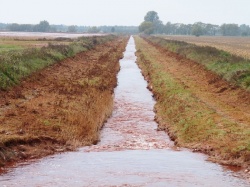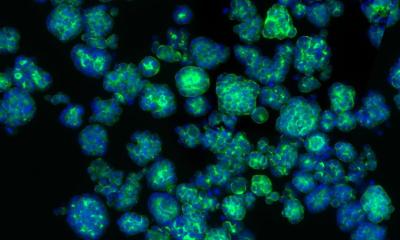Hungarian sludge in K.U.Leuven lab
On 4 October, the waste reservoir of an aluminium factory in Hungary burst. Red sludge, which is the waste resulting from the production of aluminium, flooded nearby villages. In the second week of October, researchers were granted access to the area. Doctoral student Stefan Ruyters and postdoctoral researcher Jelle Mertens of the Division of Soil and Water Management (Faculty of Bioengineering) got in a car and drove to the area, 1,300 kilometres away.


There are two ways to clean up the sludge, Stefan Ruyters explains. “There are thick layers of sludge in some places. The best way to clean these areas is by digging out the sludge and part of the underlying soil. In areas where the layer of sludge is thinner, people are considering ploughing it into the soil, which is a cheaper and faster method. The question this raises is whether it will still be possible to use these areas for agriculture.”
Ruyters and Mertens took samples of the sludge and of non-contaminated soil in the affected region. They will now conduct experiments on these samples: the sludge will be mixed with non-contaminated soil in various concentrations. “We will then examine the effect of the red sludge on plant growth.” On the one hand, there is the possible effect of increased concentrations of heavy metals, such as arsenic, cadmium and chromium. On the other hand, Ruyters predicts that the high pH of the sludge will also effect plant growth. “The pH value is an indication of acidity. A high pH indicates low acidity. The unblocking agents you might use to unblock drains at home are typical products with a high pH. The sludge appears to have an extremely high pH: pH 13. This results from the use of sodium hydroxide in the production of aluminium. We do expect the pH to reduce in the long term thanks to rainfall, which we will also simulate in the lab.” The researchers hope to present their results of their investigations in December.
27.10.2010











